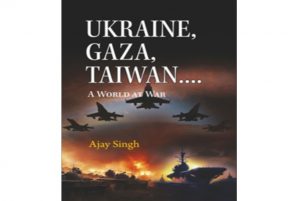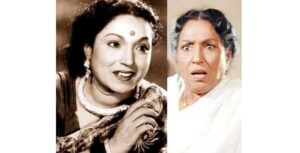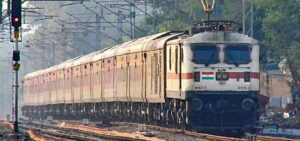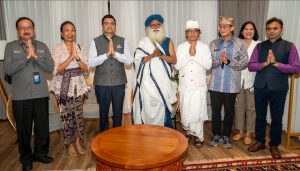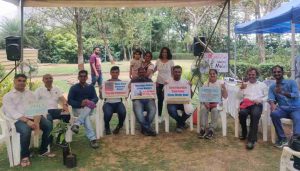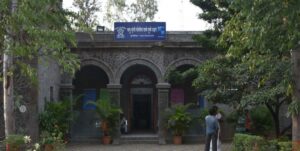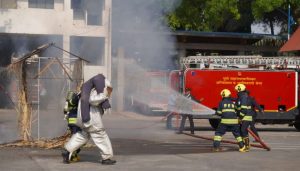26/11: Unforgettable Episode
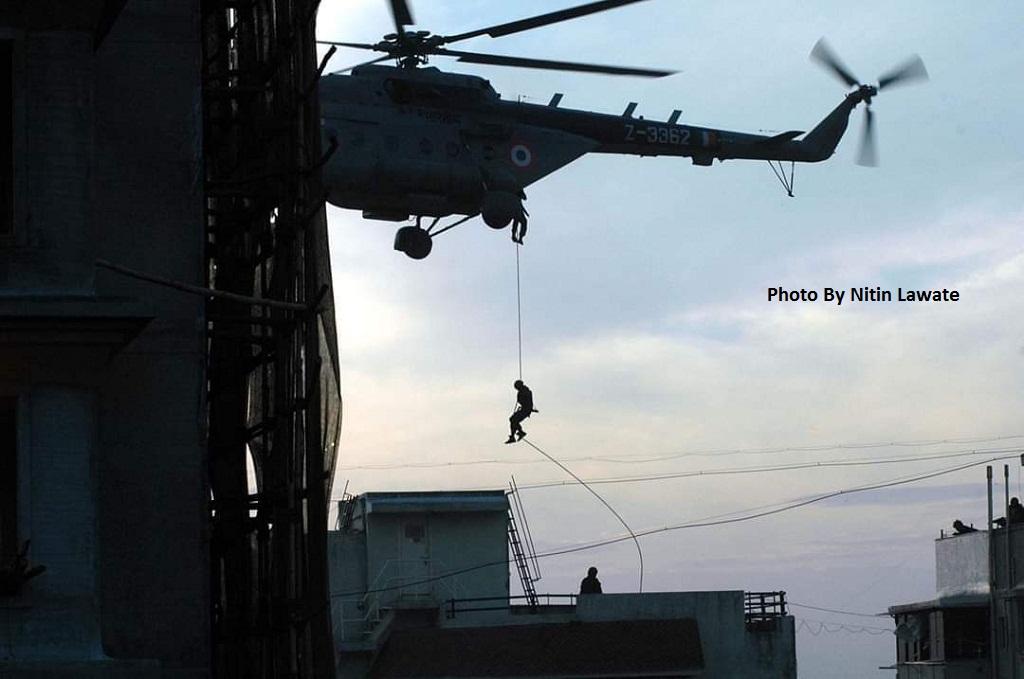
BY SHASHWAT GUPTA RAY
Pune, November 26, 2020: There are certain incidents in life that remain etched in our minds. For me, it was covering the 26/11 terror attacks in Mumbai, 12 years ago. Covering terrorist attacks is not new for me. I was working for an investigative news weekly– Tehelka in Mumbai, when on July 11 serial blasts in local trains shocked Mumbai. Later, I covered the German Bakery bomb blast in Pune. But there was a difference between these terror attacks and the 26/11 terror strike. On other instances, the attacker was an unknown face in the crowd, who escaped from the site after planting the explosives. But in case of 26/11 terror attacks, there were live attackers killing people mercilessly.
Mumbai, which has been bearing the brunt of terror attacks since 1993 — serial bomb blasts following the post Babri Masjid demolition communal riots — but never before had I seen such fear on the streets of Mumbai.
First bullet-ins
I still remember that ill-fated day. I was working for Pune-based English daily Sakal Times. I had shifted to Pune earlier that year after working in Mumbai for three years. I had finished my day’s work and was about to leave the office when I saw visuals of firing in the Fort area of South Mumbai. My first thought was it could be a gang war spilling out on the streets. I didn’t take it very seriously initially. I returned home after a half-hour, checked out the news updates. But this time I was shocked to see in the news that the then Maharashtra Anti-terrorism Squad (ATS) Joint Commissioner of Police Hemant Karkare was killed. Soon after, news came in that more police officers and personnel were killed including Additional Commissioner of Police Ashok Kamte and encounter specialist Senior Inspector Vijay Salaskar. Things had turned uglier than I thought. The casualties kept mounting. No one slept that night.
At 8 am on November 27, 2008, an emergency meeting was convened by the top management of Sakal Media Group (SMG) and the editorial heads of Sakal and Sakal Times. I was also asked to attend the meeting. A video conference was conducted by the MD of SMG Mr Abhijit Pawar. After some deliberations, it was decided that I should be sent to Mumbai immediately as a backup for our Mumbai bureau which had only a handful of staff. As a reporter, it was a huge responsibility bestowed upon me.
‘First time I saw terror in the eyes of Mumbaikars’
I boarded a bus for Mumbai soon after the meeting concluded. Various kinds of thoughts were churning inside my mind during the whole journey. I knew the topography of South Mumbai very well as my previous organisation Press Trust of India was located in the same vicinity.
I reached Dadar in the afternoon and boarded a local train for Churchgate station. A generally jam-packed railway station wore a deserted look. I didn’t find a single soul boarding the train during my entire journey from Dadar to Churchgate. That was the first time I saw terror in the eyes of Mumbaikars who are known for their resilience. I along with my photojournalist reported to our Mumbai bureau chief Mrityunjay Bose, who directed us to be stationed at Nariman House (Chabad House), where terrorists had held a Jewish family as hostage.
Chabad House, a Jewish outreach centre was run by Gavriel and Rivka Holtzberg, who had owned the building since around 2006. I along with my photojournalist Nitin Lawate took stock of the situation. The entire area was cordoned off, all exit routes from the building were sealed. While I could hear the sound of intermittent firing from automatic rifles emanating from Taj Hotel, there was pin-drop silence at Chabad House. As the night fell, the National Security Guards (NSG) commandos who had arrived by then to take part in the anti-terrorist operations codenamed ‘Operation Black Tornado’, occupied the adjacent buildings and took their position.
On high alert
Tired after a long day, I decided to take some rest on a vehicle bayonet. I could hardly get a wink of sleep as I had to be completely alert. At the crack of dawn on November 28, rattling noise of a helicopter reverberated in the entire locality. I looked up in the sky and found a huge Mi-17 helicopter of the Indian Air Force hovering and going back to the Naval base. Then there was a flurry of firing by NSG commandos from the adjacent buildings towards the direction of the room where the captors were holed up.
The strategy was to provide covering fire and pin down the terrorists. Soon after, the roaring Mi-17 chopper returned, positioning itself over the roof of Nariman House. Within no time I could see 22 NSG commandos slithering down from the chopper and landing on the rooftop. The covering fire intensified as the commandos entered the building from the top. Intense gunfire ensued for an hour. Then to my horror, I saw NSG commandos had brought up an injured comrade, who was later identified as Major Unnikrishnan, who succumbed to injuries.
The gunfight continued till the terrorists were eliminated. All the occupants of the house were killed except two-year-old boy Moshe, who survived the attack after being rescued by his nanny Sandra Samuel.
It was late evening, by the time the entire building was cleared of all booby traps. The commandos came out victorious and received rapturous applause from the people who were rejoicing on the streets. Chants of Bharat Mata Ki Jai echoed in the atmosphere. At night the politicians started arriving at the scene. But for one day, there was only one Sena on the streets of Colaba – Bhartiya Sena.
The longest 48 hours
I went to my office, filed my stories and joined my Bureau chief at Taj hotel where the action was still on. On November 29 morning, the operation finally ended. The entire NSG team led by Brigadier Govind Sisodia managed to eliminate the terrorists. It was the longest 48 hours of my life. I was on my toes with my fellow reporters, photographers and videojournalists. We all were scared. We didn’t know the bullets were being fired from which direction as it was night. Any of us could have been hit. But the security forces — the Mumbai police, Army and Navy did a great job in preventing the situation on the ground from spiralling out of control. The elite Marine Commandos of Indian Navy and Mumbai police need a special mention as they executed the initial counterattack till the NSG team arrived. For me, it remains an unforgettable experience even after all these years. The experience played a stellar role in shaping me as a frontline journalist.
As a journalist, this entire episode brought me once again in front of death and destruction, which I had seen before also. It was difficult to maintain my composure in the face of such a disaster. But by then I had already seen enough human suffering due to disasters – man-made and natural.
It was important for me to control my emotions and remain objective in my reporting. It’s easier said than done, especially when the atmosphere is surcharged. However, that’s what is the biggest challenge of the journalism profession.
The incidents can leave you completely rattled. Yet one has to regain his or her composure to execute the given task objectively. The nation has the right to know. But they must know only the truth, that questions the gaps in our system and suggest the solutions to prevent a repeat of the same disaster.
The establishment acknowledges it or not is immaterial. Our duty is to show the right path, which should be done without any malice.

(The author is an independent journalist currently based in Goa).


